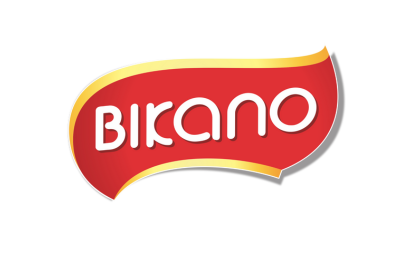India’s Frozen Food Industry: Navigating Growth Amidst Changing Tastes and Challenges
Authored article By Manish Aggarwal, Director, Bikano, Bikanervala Foods Pvt Ltd Until recently, frozen food in India was largely limited to desserts like ice cream and pricey imported fruits, accessible mainly to the affluent. However, the

Authored article By Manish Aggarwal, Director, Bikano, Bikanervala Foods Pvt Ltd
Until recently, frozen food in India was largely limited to desserts like ice cream and pricey imported fruits, accessible mainly to the affluent. However, the pandemic sparked a transformation in the perception of frozen foods across the country. It brought in a new era of readily available frozen meals, offering convenience, speed, and simplicity in cooking. This shift was particularly embraced by the semi-urban and urban populace, especially working couples, who found these ready-to-eat or heat-and-eat options immensely convenient and easy to prepare.
In recent years, the Indian market has witnessed a remarkable surge in the demand for frozen and ready-made foods. This surge can be attributed to various factors, including the increasing trend of young individuals migrating to urban areas and living independently, the digitalisation of food and beverage retail, and ongoing advancements in cold chain infrastructure. With reports predicting a robust compound annual growth rate (CAGR) of 16.3% for the frozen food market between 2025 and 2029, the industry has now become an integral component of India’s culinary landscape. It provides a variety of frozen foods to suit the different tastes and lifestyles of people in the country.

The Growing Popularity of Frozen Food in India
Once seen as a niche market, frozen food has gained significant popularity in India due to several key factors.
Ease and Efficiency
In today’s busy city life, cooking big meals can be hard. With busy schedules and urban living, people have less time for the kitchen. Frozen food offers an easy and quick solution, giving many choices that are convenient and still taste good. Whether it’s for a quick dinner or a snack, frozen food fits modern lifestyles, offering tasty options when time is short.
Global Exposure
As Indians explore international tastes through travel and the internet, their gastronomic horizons are broadening. They are increasingly willing to try a variety of flavours and dishes, many of which are conveniently available in frozen form. This openness to global cuisines has changed India’s food scene, with frozen foods providing easy access to diverse tastes and allowing people to enjoy exotic dishes from the comfort of their homes.
Expansion of Organized Retail
The rise of organized retail and the numerous options for grocery shopping have transformed consumer habits. Today, shoppers are more informed and have a wide array of varieties and brands to choose from. They trust the quality of foods stored by supermarkets and hypermarkets, which benefit from reliable cold chain facilities.
Cold Chain Infrastructure
Improvements in cold chain logistics have revolutionized the storage and transportation of frozen food items. These advancements ensure that frozen products retain their quality and safety, extending their shelf life and enhancing their reliability.
Rising Demand for Western Cuisine
The growing fondness of the younger generation for Western cuisine has sparked a shift in food preferences, driving up the demand for frozen foods. This trend reflects changing food habits and a desire for convenience and variety. Additionally, exposure to Western culinary trends through social media and international travel has further fuelled this demand.
Hurdles in the Indian Frozen Food Industry
The growth of the frozen food industry in India has been accompanied by several challenges and concerns that need to be addressed. One common concern among Indian consumers is the perception of frozen foods lacking freshness. Educating consumers about the technology and processes behind frozen foods is essential to overcome this perception and build trust in the quality of these products. Additionally, while there have been improvements in India’s cold chain infrastructure, gaps still exist, posing challenges in maintaining a consistent and reliable cold chain to ensure the quality and safety of frozen products throughout the supply chain. There is a shortage of cold storage facilities, especially in smaller towns and rural areas. Increasing the availability of cold storage infrastructure is necessary to support the growth of the frozen food industry and meet the demand for these products across the country.
Price sensitivity is also a significant factor, with frozen foods often perceived as more expensive than fresh alternatives. Implementing pricing strategies and competitive pricing is essential to make frozen foods accessible to a broader range of consumers.
Quality control is paramount in ensuring that frozen products meet high standards of quality and safety. Concerns have been raised about the use of preservatives and additives in some products, highlighting the need for robust quality control measures.
Future Prospects
The future of frozen food industry in India looks promising, with several emerging trends and developments on the horizon. As consumers increasingly prioritize health and wellness, there is a growing demand for frozen products that are low in preservatives, additives, and artificial ingredients. Manufacturers are responding to this shift by offering healthier options. Additionally, the rise of plant-based diets and an increasing interest in ethnic and regional cuisines are expected to influence the variety of frozen products available.
The expanding reach of quick-commerce is set to boost the frozen food market by making a wider selection of products accessible to consumers. With a burgeoning middle class and rising disposable incomes, there is also a growing market for premium and gourmet frozen food products. Moreover, sustainable packaging and environmentally friendly practices are likely to gain importance in the frozen food industry, aligning with global sustainability trends. Technological advances in freezing and packaging are expected to lead to products with improved taste, texture, and nutrient retention, further enhancing the appeal of frozen foods in the Indian market.
Final Say
The Indian frozen food market has seen significant growth, evolving from a niche sector to a popular choice for consumers who value convenience, variety, and taste. With a diverse range of products such as frozen fruits, vegetables, meats, and ready-to-cook meals, the market caters to a wide array of consumer preferences. However, challenges like maintaining high quality, managing costs, and ensuring adequate cold storage facilities must be addressed for sustained growth. As the market continues to expand and innovate, it is set to play an increasingly important role in shaping India’s food culture and eating habits in the coming years.
—–
 English
English French
French German
German Italian
Italian




